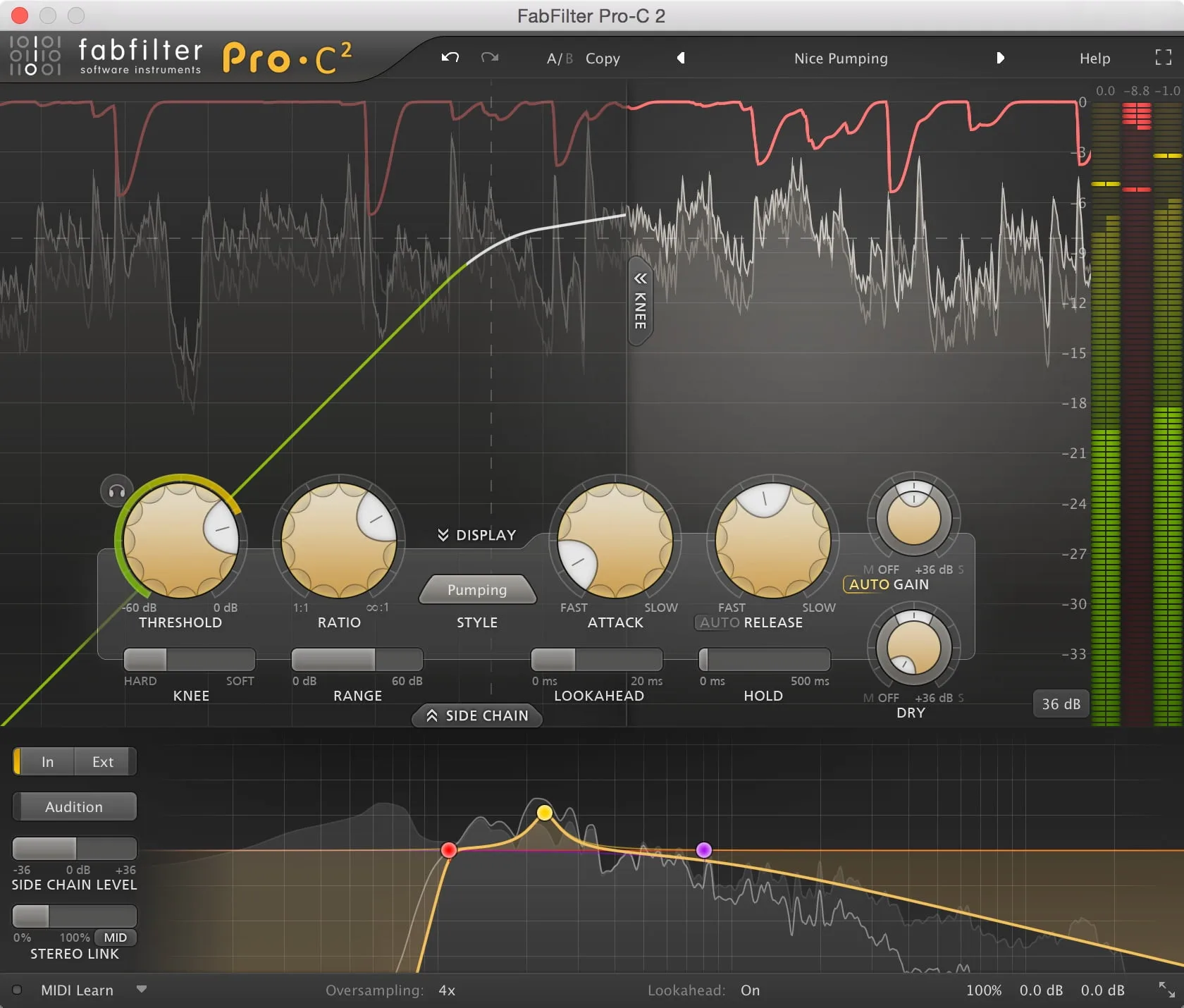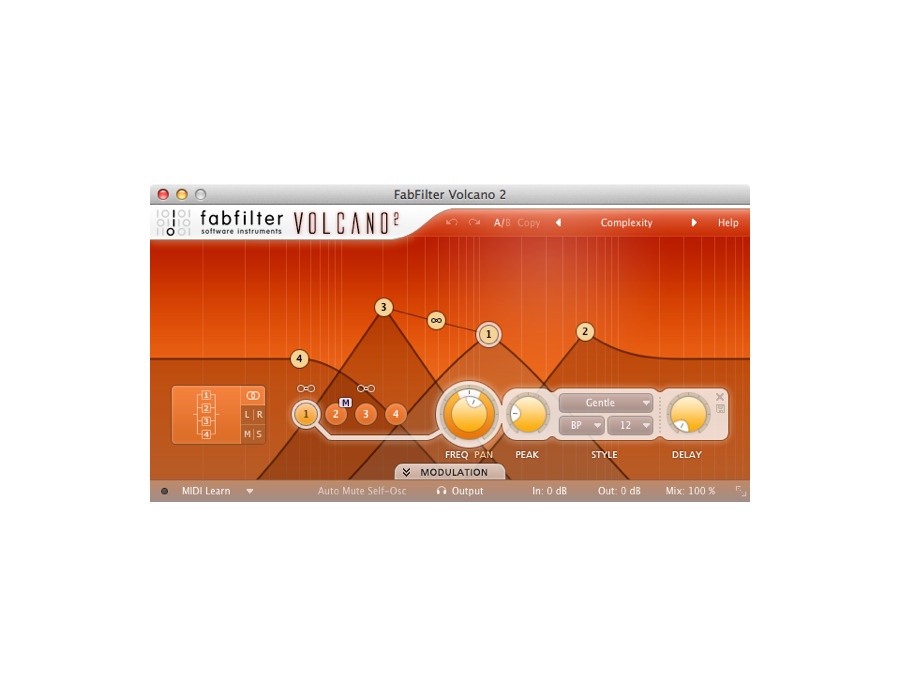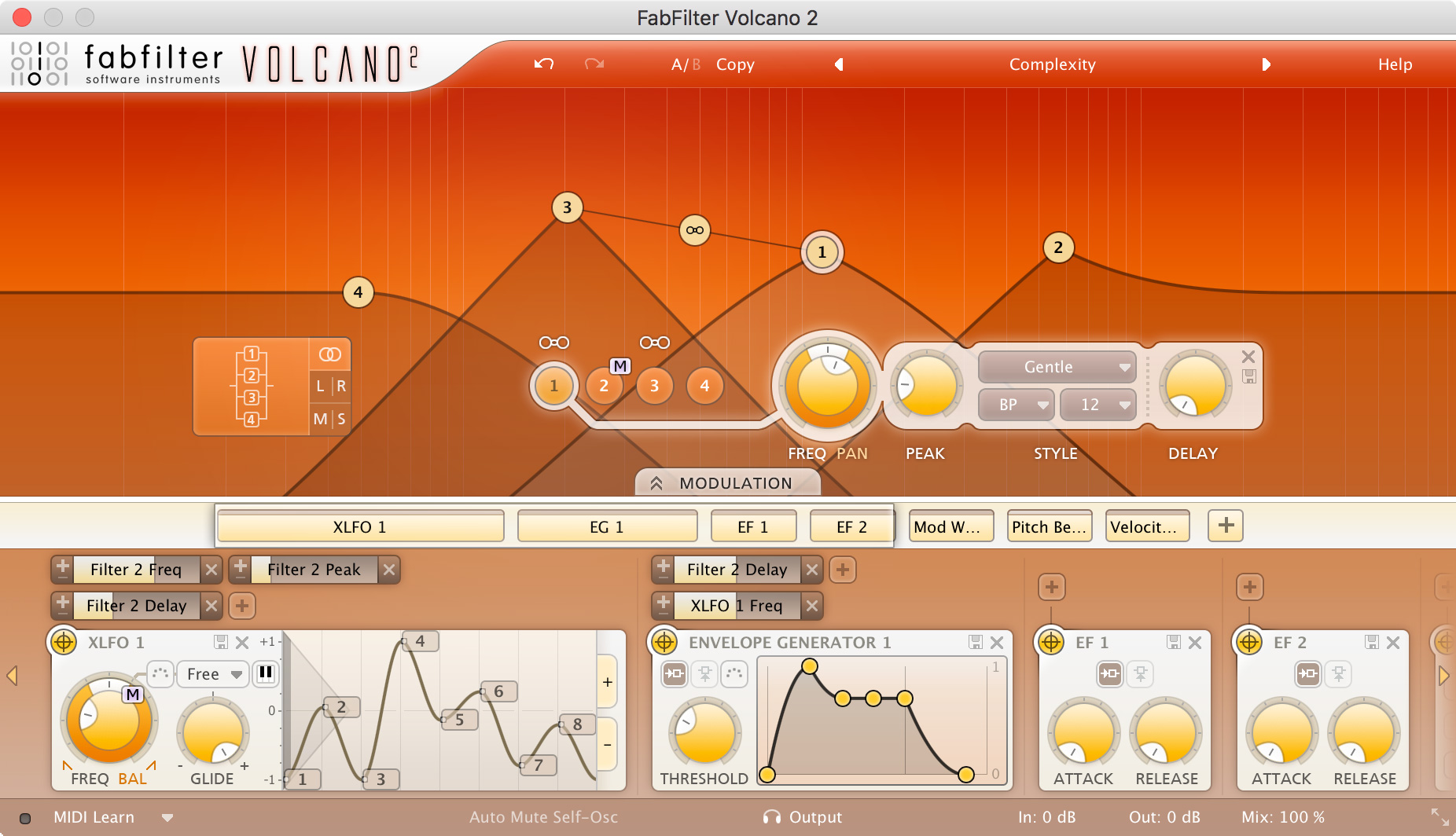

The threshold control has a concentric ring around it that shows the band’s signal level.

Each band provides compression and expansion modes and offers continuously variable controls for setting threshold, ratio, range (maximum gain change), attack and release times, knee, look-ahead time, output level and pan. (You can select multiple bands at once and adjust their parameters using a common control set.) Conventional crossover filters split the signal into bands.

Selecting a band displays its control set in the GUI the controls for the other bands remain invisible until they’re selected. This independent slope adjustment lets you shape and focus the influence of the dynamics processing within each band more precisely than in any other multiband processor I’m aware of. The dynamic- and linear-phase modes allow you to continuously vary each filter’s slopes (independently at high and low crossovers!) to be between 6 and 48 dB per octave. In addition to traditional and linear-phase modes of operation familiar to equalization wonks, you can select an innovative dynamic-phase mode that completely eliminates phase artifacts within a band when it’s not processing (such as when signal level is below its compressor’s threshold) dynamic-phase mode eliminates latency and potential pre-ringing artifacts inherent in linear-phase algorithms. If you prefer to use the traditional crossover-based approach to multiband processing, you can extend the width of Pro-MB’s individual bands until they snap to crossovers for adjacent bands. The spectrum between two non-contiguous filters automatically remains unaffected-you don’t need to set up crossovers just to bypass processing there. You can place up to six bands anywhere in the spectrum. Pro-MB takes a more intuitive and direct approach: You click in the GUI’s frequency plot to create a new band at the specific center frequency you wish-just like you would when creating a new node in an equalizer plug-in-and then drag graphic crossover controls to adjust the filter’s bandwidth. It’s arguably a roundabout way of working. The drawback to such a paradigm is that you have to guess at the resulting center frequencies (where the processing will exhibit its greatest depth for each band). To use a traditional multiband dynamics plug-in, you begin by specifying its crossover frequencies.
TRIGGER FILTER IN FABFILTER VOLCANO PRO
I reviewed V1.00 of the AU plug-in in Digital Performer 8.05, using an 8-core Mac Pro running OS X 10.8.5.

The cross-platform Pro-MB is available in 32- and 64-bit versions in VST, VST3, AU, AAX Native and AudioSuite formats, and in 32-bit RTAS format. The plug-in’s extremely comprehensive and powerful feature set is augmented by highly intuitive operation that breaks the mold. Each band can operate in stereo or M/S mode and use variable stereo linking and sidechain filtering. Pro-MB provides upward and downward compression and expansion in up to six independent frequency bands. To provide the most flexibility and power, a multiband processor should be able to increase or decrease gain not just in select frequency bands but also at either end of a track’s dynamic range, top or bottom. Each band has its own sidechain with tunable bandpass filter (shown here as a red horizontal line above the GUI’s control knobs). 1: Pro-MB offers six independent bands for implementing upward and downward compression and expansion.


 0 kommentar(er)
0 kommentar(er)
